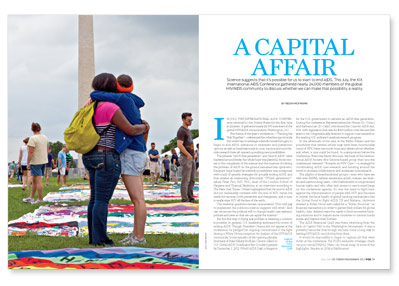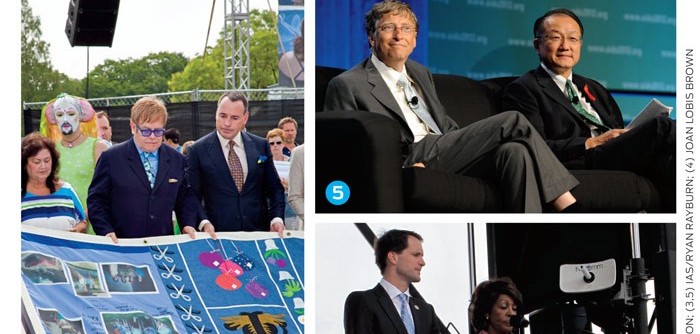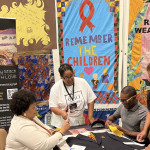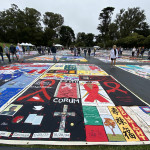
In July, the International AIDS Conference returned to the United States for the first time in 22 years. It gathered nearly 24,000 members of the global HIV/AIDS community in Washington, DC.
The theme of this year’s conference—“Turning the Tide Together”—referenced the collective opportunity the world has to leverage scientific breakthroughs to begin to end AIDS. Advances in treatment and prevention options as well as headway made in cure, vaccine and microbicide research have all opened up exciting new possibilities.
The phrases “AIDS-free generation” and “end of AIDS” were bantered around freely. But while hope was plentiful, those closest to the complexity of the science and the nuances of solving the problem of AIDS on the ground remained less optimistic. Rampant hope fueled by scientific possibilities was juxtaposed with a lack of specific strategies for actually ending AIDS, and that created an interesting dichotomy. “Which generation?” asked Peter Piot, MD, PhD, dean of the London School of Hygiene and Tropical Medicine, in an interview according to The New York Times. Others highlighted that the end of AIDS did not necessarily correlate with the end of HIV, hence the needs for vaccines, both preventive and therapeutic, and a cure, to really wipe HIV off the face of the earth.
The essential questions remain unanswered: Who will pay to implement the solutions science suggests will work? And can we secure the political will to change health care systems, policies and laws so that we can apply the science?
But the first step to fixing any problem is believing a solution is possible. In general, U.S. leadership embraced the notion of ending AIDS. Though President Obama did not appear at the conference, he pledged his ongoing commitment to the fight during a White House reception for leaders of the HIV/AIDS community. In her remarks at the opening plenary, Secretary of State Hillary Rodham Clinton called on U.S. Global AIDS Coordinator Eric Goosby to present by December 1, 2012 (World AIDS Day), a blueprint for the U.S. government to achieve an AIDS-free generation. During the conference, Representatives Jim Himes (D–Conn.) and Barbara Lee (D–Calif.) introduced the Cure for AIDS Act, H.R. 6187, legislation that calls for $100 million over the next five years to be Congressionally directed to support cure research in the existing U.S. military’s medical research program.
In the aftermath of the case of the Berlin Patient and the possibility that several others may have been functionally cured of HIV, there was much buzz and debate about whether, and when, a cure could be found. In a symposium before the conference, Francoise Barré-Sinoussi, the head of the International AIDS Society (the Geneva-based group that runs the conference), released “Towards an HIV Cure”—a strategy for coordinating AIDS cure research and funding around the world to increase collaboration and accelerate cure research.
The plights of disenfranchised groups—men who have sex with men (MSM), African Americans, youth, women, sex workers and injection drug users—who have limited or compromised human rights and who often lack access to care loomed large on the conference agenda. So was the need to fight back against the criminalization of people with HIV and the need to bolster the fiscal health of global funding mechanisms like the Global Fund to Fight AIDS, TB and Malaria. (Activists dressed in Robin Hood suits called for a “Robin Hood tax” on financial transactions in order to garner fresh dollars for global health.) Also debated were the needs to find innovative funding solutions and to inspire more countries to commit funds inside and beyond their borders.
The AIDS Memorial Quilt was there, stretching from the back of Capitol Hill to the Washington Monument. It was a powerful reminder that though we have come a long way in battling HIV/AIDS, our job is far from done.
It would be impossible to begin to capture all that went down at the conference. For POZ’s exclusive coverage, check out poz.com/tag/aids-2012. Here, our visual recap of some of the highlights. See you in 2014 in Melbourne!











Comments
Comments